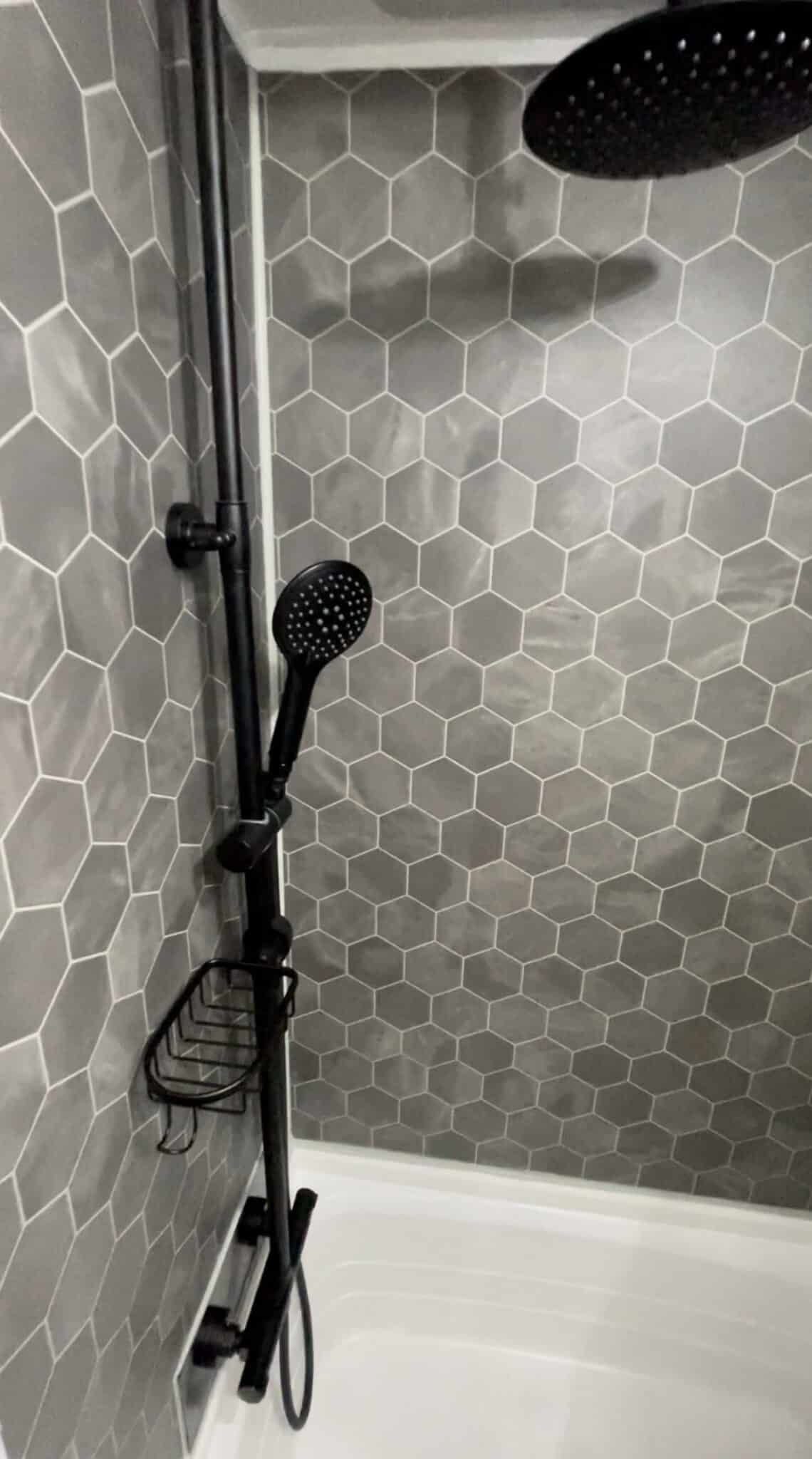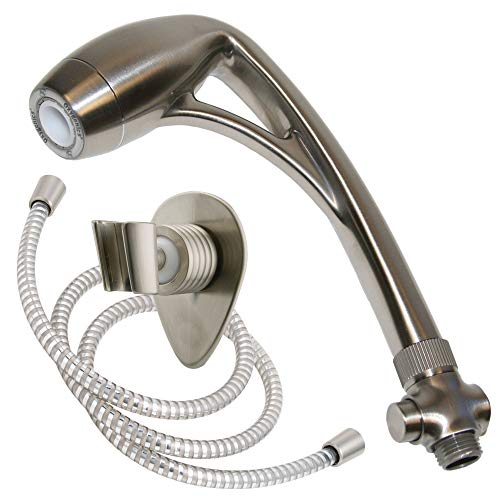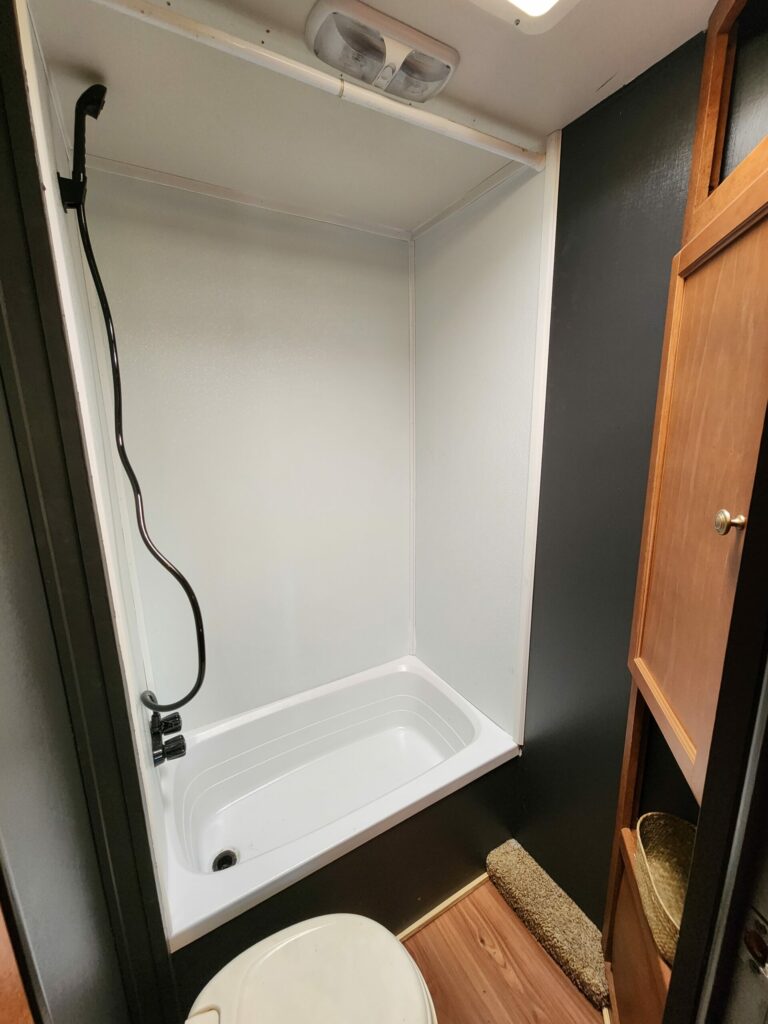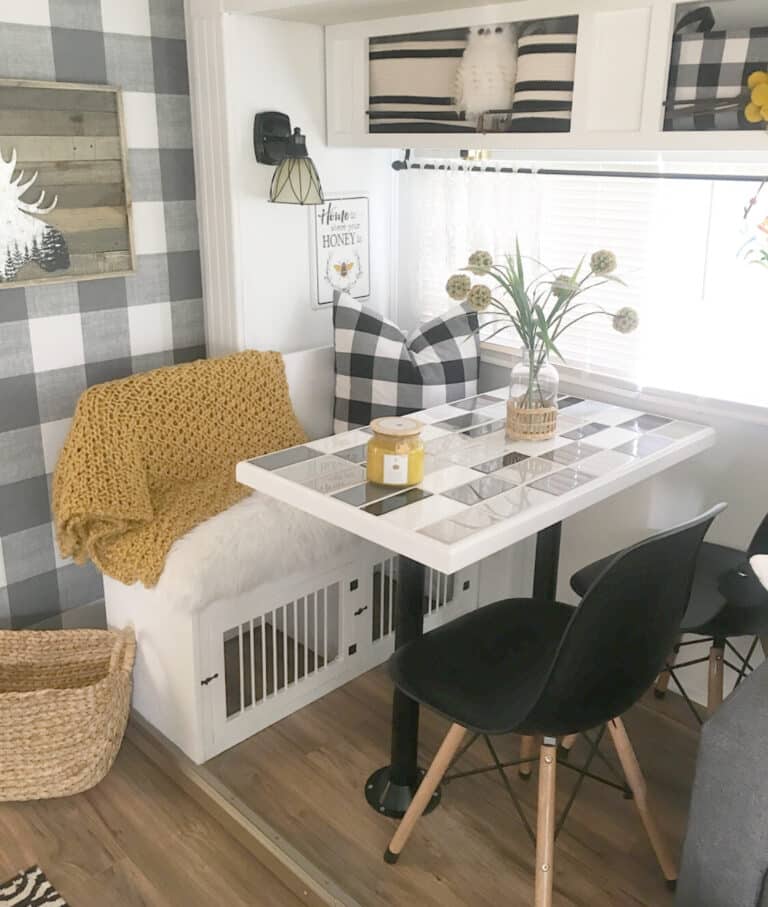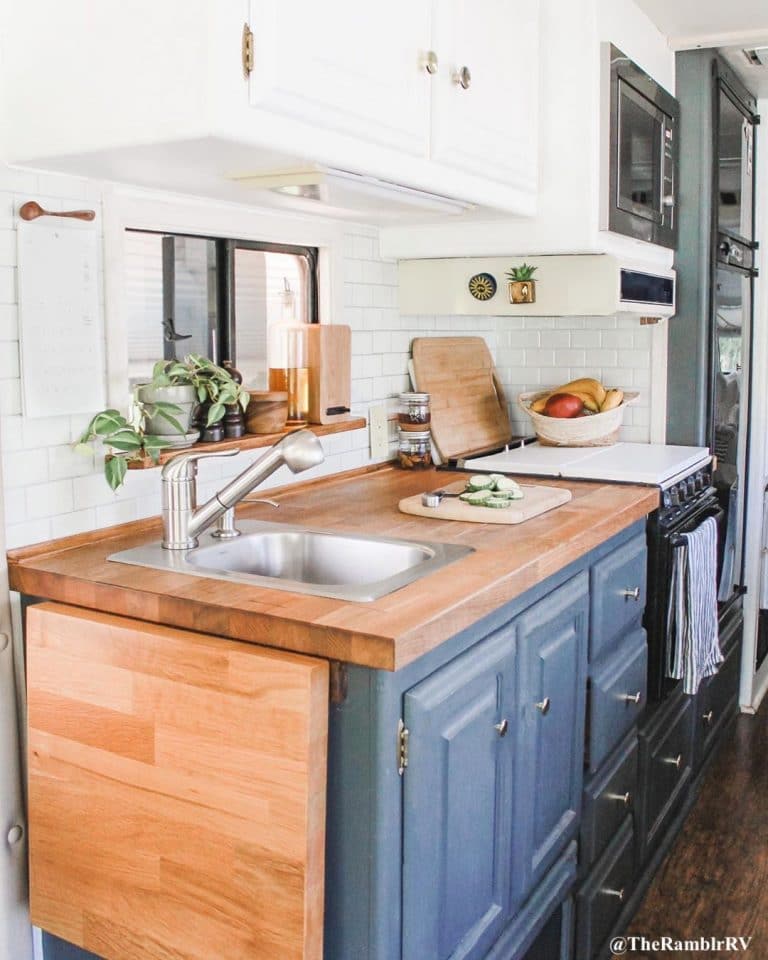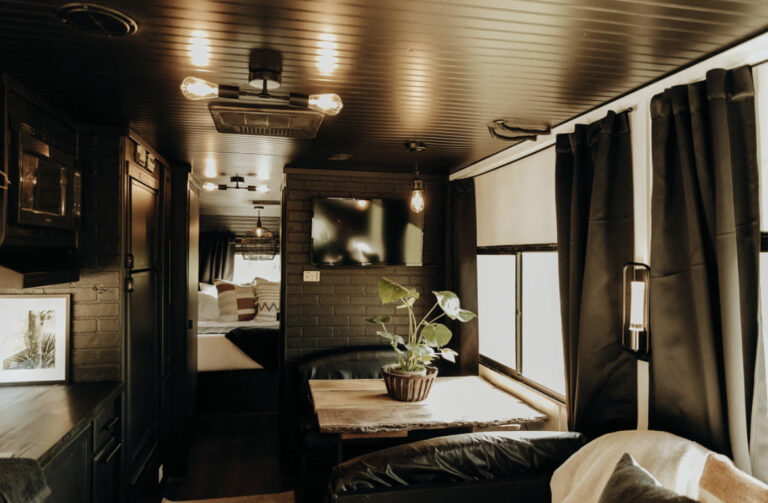How to Increase Water Pressure in RV Showers: 2 Effective Solutions
This post may contain affiliate links.
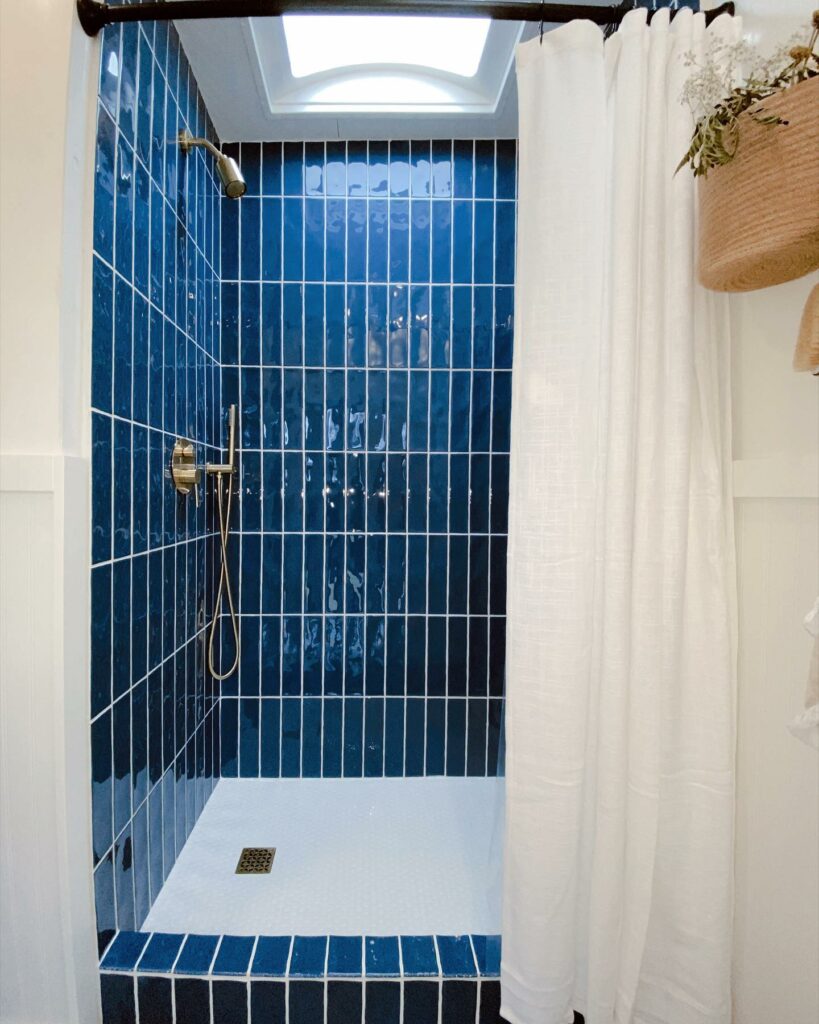
If you’ve ever stepped into your RV shower after a long day of hiking or driving only to be met with a sad drizzle of water, you’re not alone. One of the most common complaints in the RV community is low shower pressure, leaving many RV owners wondering how to increase water pressure in RV shower systems. Whether you’re running off a freshwater tank or have full hookups, nothing is more disappointing than craving a high-pressure rinse and getting a drip of water.
So what’s the deal about that? Well, RV showers are totally different than the shower in your sticks-and-bricks house. Water pressure is influenced by several factors—flow rate, water heater size, campground hookups, and even the shower-head itself. The good news is, there are several ways to make your RV shower experience better without tearing apart your plumbing. In this article, we’ll break down why RV water pressure feels weak and explore two tried-and-true upgrades that can transform your shower: installing a pressure-boosting shower head or switching to a tankless water heater. Depending on your setup, one of these changes could make your RV shower feel more like the shower you’re expecting.
Why Is Water Pressure Low in RV Showers?
First, let’s be clear on why RV showers rarely give you that hotel-level spray. Most RVs are designed to conserve water and protect their plumbing systems, so they intentionally restrict how much water flows through the pipes. Add in the fact that RV water heaters are much smaller than the ones in your house (often just 6–10 gallons), and you’ll notice that long, hot showers aren’t really the norm on the road. Sad, I know!
It also helps to understand the difference between water pressure and water flow. Pressure is the force of water coming through the pipes, while flow rate is how much water actually comes out. Even if campground water hookups are providing plenty of pressure, your RV’s plumbing and shower head might be restricting the flow — making it feel weak.

The Truth About Flow Rate and Water Pressure
Flow rate is measured in gallons per minute (GPM), and it’s the key factor in how your shower feels. A shower head with a low GPM is designed to save water, but it might leave you rinsing forever under a trickle. We all know how frustrating that is when you just need to rinse the shampoo from your hair after a day of hiking! On the flip side, a higher GPM shower head can feel amazing, but it will drain your small RV water heater much faster. From personal experience, you don’t know want to drain all the water and have to inform your family that there’s not water left for them to shower!
That’s why many RV-friendly shower heads are designed with special features, like air infusion or focused spray patterns, to give you that high-pressure sensation without wasting water. The trick is finding the balance that works for you — enough flow to feel refreshing, but not so much that you’re out of hot water after two minutes.
Upgrade to a Better RV Shower Head
The easiest, most affordable way to increase water pressure in your RV shower is to swap out your shower head. Luckily, installation is simple because most RVs use standard connections, so it’s usually just a matter of unscrewing the old one and attaching the new.
Following are some shower heads popular among RV owners:
Oxygenics Shower Head (Fury or BodySpa)
Designed specifically for RVs, these Oxygenics shower heads use air pressure to create a strong, refreshing spray while keeping flow rates efficient.
- 5 spray settings are powered by cutting-edge technology to increase pressure
- Powerful Oxygenic setting amplifies existing water pressure and widens coverage
High Sierra Shower Head
The High Sierra Classic Showerhead is a residential model that’s eco-friendly but engineered for a surprisingly powerful rinse.
- AWARD-WINNING — High Sierra’s shower heads work the way that nature does by colliding water to create a rain-like cascade of large, heavy, high-energy droplets. They’re amazing at washing out shampoo, conditioner, and other hair products. New nylon insert protects metal from limescale buildup. Connects to standard 45° shower arms with ½” NPS Male Threads. NO TEFLON TAPE REQUIRED!
Delta Shower Head with H2O Kinetic Technology
Delta is a trusted faucet brand that offers several models of shower head that use what they call “H2O Kinetic technology,” creating larger drops that feel like higher pressure against your skin. Since several of their residential shower heads include this technology, this would be a good option if you’re remodeling your RV shower and are looking for a stylish-yet-functional shower head.
- 3X COVERAGE: Delta H2Okinetic PowerDrench Spray provides 3X more coverage than a standard shower head by creating a unique wave pattern and larger water droplets for more intensity and warmth
- 3X COVERAGE: Delta H2Okinetic PowerDrench Spray provides 3X more coverage than a standard shower head by creating a unique wave pattern and larger water droplets for more intensity and warmth
Replacing your RV shower head is simple upgrade that can make your shower feel completely different without touching your water heater or plumbing. Read our how-to guide to learn how easy it is!
If you’re renovating your RV bathroom, you might also enjoy browsing these DIY RV shower makeover ideas and RV bathroom remodel inspirations.
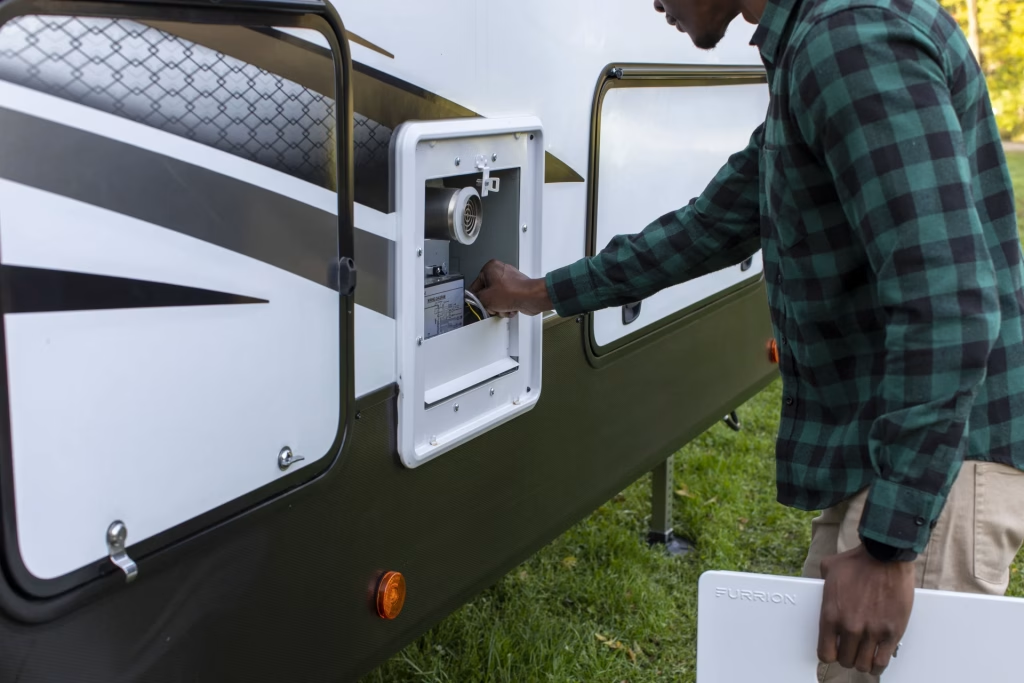
Consider Switching to a Tankless Water Heater
If you’re ready for a bigger upgrade, a tankless water heater could be the ultimate solution! Many newer rigs have these as the default water heater because they are so efficient and popular. Unlike traditional RV water heaters that only hold a few gallons, tankless systems heat water on demand, which means you can enjoy longer showers without the dreaded “lukewarm water” until all the water is gone situation!
Popular RV-ready models include Girard and Furrion tankless heaters.
- POWERFUL PERFORMANCE — At 42,000 BTUs, this continuous hot water heater provides optimal performance for RV plumbing. The quiet, brushless motor runs on 12V power that operates at less than three amps for a nearly noiseless operation
- High Heating Power: 60K BTU heating power & a 2.4GPM capacity, Furrion RV Gas Water Heater will deliver hot water on demand at consistent temperature even when the ambient temperature drops to 32ºF.
Tankless water heaters work best when you’re connected to water since they require a steady flow to perform well, so they’re not ideal if you do most of your camping off-grid. Installation is a bit more involved (and pricier) than just swapping a shower head, but for full-timers or anyone who loves long, hot showers, the investment can be totally worth it.
For more RV shower upgrade inspiration, check out these tips on how to update your RV shower DIY style.
Finding the Right Balance with Water Pressure Regulators
Here’s something that might surprise you: sometimes the problem isn’t that your campground water pressure is too low—it’s that it’s too high! Many campgrounds pump water at pressures that can damage RV plumbing, which is why many RVers use a water pressure regulator at their hookup. These little devices are lifesavers for protecting your pipes and fittings, but they can also be the culprit behind your weak shower.
The standard advice is to set your regulator around 40-45 PSI to protect your RV’s plumbing. But here’s the thing: if you’re dealing with already-restricted RV shower heads and smaller pipes, that “safe” pressure might leave you with an underwhelming rinse. If your RV’s plumbing is in good shape and you’re not dealing with any leaks or old fittings, you might be able to bump that up to around 50-55 PSI for better shower performance.
Just remember to check your RV’s manual for the manufacturer’s recommended maximum water pressure, and always monitor your system for any signs of stress or leaks when making adjustments. It’s all about finding that sweet spot where you get a satisfying shower without risking expensive plumbing repairs down the road.
Additional Tips to Improve RV Shower Pressure
Before committing to a big purchase, it’s smart to check a few basics:
- Clean or replace a clogged shower head or aerator.
- Inspect your external water pressure regulator if you use one—it might be limiting flow more than necessary.
- Check any inline sediment filters, which can get gunky and restrict water.
- Use a water pressure gauge at the campground hookup so you know what you’re actually working with.
Sometimes, a quick clean or adjustment is all it takes to get things flowing better.
Conclusion: How to Increase Water Pressure in RV Showers
Learning how to increase water pressure in RV shower systems doesn’t have to be complicated. For most RVers, upgrading to a better shower head is the fastest, easiest way to get a more satisfying rinse. If you’re living on the road full-time or spend most of your time at campgrounds with reliable hookups, a tankless water heater can take things to the next level by giving you consistent, endless hot water.
Ultimately, the best choice depends on your travel style. If you’re a weekend camper or boondocker, a pressure-boosting shower head might be all you need. If you crave those long, spa-like showers while hooked up to water, a tankless heater could be a game-changer. Either way, your RV shower just needs the right setup!

